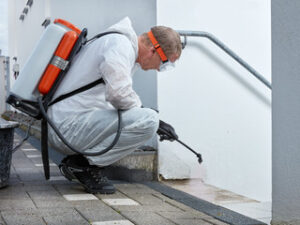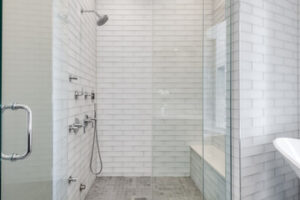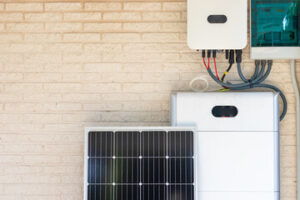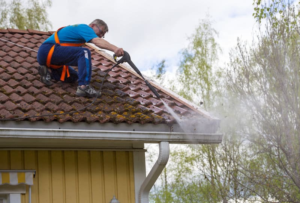Pests can be a major nuisance. They can also cause health problems and property damage if left unchecked. Whether it’s a problem with ants rodents, or even spiders and cockroaches, it is always a good idea to call Pest Control Shawnee KS services.
Visible pests like cockroaches and rodent droppings indicate that it’s time to call in the professionals. However, there are other signs of a pest infestation that you should look out for.

Pest Sightings
Pests like flies, rodents, and cockroaches are not only a nuisance, they can also pose health risks. They can spread diseases that can be harmful to humans and pets. A pest infestation is also a major risk to the structural integrity of your property. This is why it is important to act at the first sign of a pest problem.
One of the most obvious signs of a pest infestation is seeing their droppings or tracks around your home. Checking in hard-to-reach areas such as pantries and cabinets, attics and crawl spaces is especially important. These dark, damp, and often secluded spaces provide the perfect hideout for unwanted pests. You can also look for discarded pest nests, webs, and tracks in dusty or muddy areas such as under sinks and along baseboards. Different pests leave distinct droppings, so it is important to identify them correctly. For example, rodent droppings are small and pellet-shaped while cockroach droppings resemble coffee grounds.
You should also look for unexplained damage to your home’s interior or exterior. For instance, if you notice unexplained wood damage to the side of your house or roof, it may be due to a termite or other wood-destroying pest infestation. Other common signs of a pest infestation include noticing unexplained holes in your trees, bushes, and grass as well as finding nests around the property.
Getting professional pest control services is vital to protect your family and property from uninvited guests. If you see any of the signs listed above, contact us today to schedule an inspection and take back your home!
Damage
Pests aren’t just nuisances that can ruin your peace of mind, they can also cause serious damage to the home. If you see evidence of pests, such as holes in fabric furniture, wood damage, sagging walls, or other signs, it’s time to call a pest control company. They can provide effective solutions to treat the problem and prevent it from returning in the future.
The presence of certain pests can pose health concerns as well, especially if rodents have invaded. They can spread diseases, including hantavirus pulmonary syndrome, which causes breathing difficulties. They can also leave feces and urine in the home, which can cause problems for people with asthma or other respiratory issues. Rodents can also chew on wires and cables, which can lead to fires or expensive repairs. Foul odors are another sign that it’s time to call pest control services. These odors can be caused by pest droppings, urine, or even the gases produced when they breathe. A professional will be able to remove these odors safely and effectively.
When it comes to wood damage, it’s essential to take note of the type and extent of the damage, as well as the location of the damaged area. For example, termites are likely the culprit if you notice a sagging ceiling or drywall, while ants may be to blame for holes in fabric furniture. Rodents, on the other hand, can chew through pipes and water lines, causing plumbing damage and resulting in expensive repair bills.
The best way to protect your property and maintain a safe environment for you and your family is to recognize the signs of a pest infestation early on. Contact us today for a free inspection and to reclaim your home from unwanted pests!
Health Issues
Pests like rodents, cockroaches, and mosquitoes carry diseases that are detrimental to human health. These pests can spread bacteria such as E coli and Salmonella, cause allergies, and trigger asthma attacks. Additionally, certain pests can also cause dangerous and life-threatening bites such as ticks, fleas, mosquitoes, and spiders. Infestations with these pests require professional pest control services to reduce the risk of health problems.
In addition, pest infestations can damage your home’s structure and furnishings. They can chew through wires, drywall, wood, and more, leading to costly repairs and replacements. Professional pest control services can help prevent these damages and save you from paying out of pocket for restoration experts in the future.
Another sign of a pest problem is unexplained bites. These are often associated with a bed bug, flea, or cockroach infestation. Unexplained bites are a serious indication of an insect problem and need to be treated as soon as possible. The longer you wait, the more severe the bites will become. Untreated bites can also lead to dangerous and sometimes life-threatening allergic reactions in some people.
Health concerns caused by pests are a growing concern in the country, particularly because some of these insects and rodents are known for spreading diseases that are harmful to humans, such as hantavirus, Plague, and Salmonellosis. Rodents, cockroaches, and mosquitoes can also contribute to allergies and asthma by spreading bacteria and other harmful substances while stinging insects such as bees and spiders can also pose a significant threat to human health.
Even though DIY pest control products are readily available, you should always enlist the help of a professional pest control service. These specialists have the knowledge and tools to identify the pests, their sources, and the best methods for their eradication and future prevention.
Frequent Sightings
If you’re seeing pests regularly, it’s time to call in the experts. Oftentimes, the first signs of pest infestation are visible in the kitchen: cockroaches hide in narrow cracks and crevices like behind refrigerators, sinks, drawers, and cabinets; ants crawl on food in pantries and cupboards; rats chew through wires in electrical boxes; and mosquitoes hide in bushes around your home’s foundation and windows.
Leaving these pests unchecked may cause further damage to your property, and it could lead to expensive repairs and a lower home value. Pest control services take quick action to prevent this and work until the pests are completely gone, keeping your family safe from disease-carrying bugs and rodents.
When hiring a pest control service, be sure to ask how long the company has been in business and what their experience is with your type of pest. You should also ask about their methods of treatment and what their guarantees are. Make sure the company carries liability insurance that covers any damages to your property during treatments, and that they provide clear documentation of pest species and the extent of the infestation before they begin treatment.
Some pest control companies require a contract to ensure consistency of service and that homeowners are not skipping treatments, which can lead to recurring problems. Some offer customizable plans with price options based on your property’s square footage, number of rooms, and other factors. Compare custom prices, treatment frequencies, guarantee periods, and overall plan coverage when choosing a pest control service.
Ultimately, professional pest control services are worth the investment. While some families avoid these services due to potentially high costs and exposure to harmful chemicals, it is crucial to know that pests can cause major damage to your home in the blink of an eye. A reputable pest control service offers the expertise, reliability, and guaranteed results you need to keep your family safe from pesky critters.
Infestations
When pests grow in unwanted places like homes, businesses, and farms, they can damage property, spread diseases, and contaminate food. They can also pose negative health implications for people and pets who come into contact with contaminated areas.
Pest infestations are usually a sign that it’s time to call pest control services. These invaders can be very difficult to eliminate without professional assistance, and ignoring them can lead to even worse problems.
The most obvious sign of a pest problem is the presence of droppings, which can indicate that they are breeding in your home. Rodents leave small pellet-shaped droppings, and termites and cockroaches produce powdery droppings. These signs can be found near food sources and in hard-to-reach locations such as crawl spaces, attics, and basements.
Other indications of a pest infestation are chew marks, nests, and tunnels. Ants, pharaoh ants, and carpenter ants can build tunnels in walls and woodwork, while rats can gnaw through electrical wires and insulation. Look for gnaw marks on tin cans, boxes, and wood surfaces, as well as a foul odor that may be coming from a rodent nest.
Pests love to take up residence in our homes because they offer warm, dark, and sheltered places to breed, hide during the day, and find food. They are also attracted to a variety of moisture sources, such as dripping faucets and clogged pipes. The best way to prevent a pest infestation is to make sure your home is properly maintained, including storing food in sealed containers and fixing leaking faucets as soon as possible.




